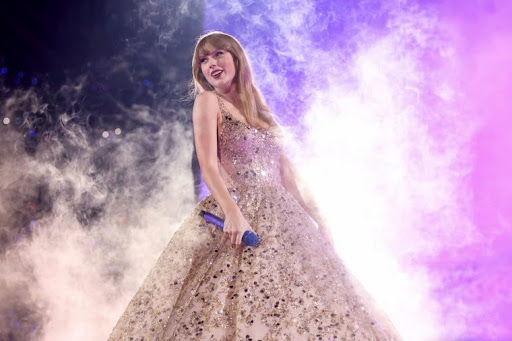
The first time I put on a VR headset a few years ago was the first time I truly understood that seeing is believing. An entire new world opened up in my living room, and I perceived the virtual objects and boundaries as real, physical things. But even though my brain wanted to accept the virtual world in front of me, I couldn’t touch what I saw. This disconnect had led me to ponder these questions: was the virtual world in front of me real? What makes something real? This experience led me to question what reality really meant. Now, years later, I have the opportunity to seek answers. Concerts are a perfect example to consider these questions with. When I think of concerts, they’re loud, crowded, and bursting with energy. The excitement of the audience is a living, breathing entity that I get to be a part of until the end of the night. What makes them interesting is that they can be experienced in virtual reality now. With the emergence of this new form of concertgoing, music concerts can help illustrate how physical and virtual reality are both real to people, and how they each have their strengths and weaknesses.
The way virtual concerts are recorded is quite fascinating. Virtual concerts are recorded with 360 degree cameras and streamed to people paying for virtual tickets. These tickets are much cheaper and can be enjoyed in attendees’ homes. Does this count as going to a concert? The experience would not be the same as seeing one in person- you wouldn’t be able to be in and sing with the crowd. Virtual reality concerts bring up the question of whether or not virtual reality is real. Is seeing the Eiffel Tower in virtual reality the same as seeing it in person? Would I be able to tell my friends I went to a concert after choosing to attend one virtually?
I would personally still choose to see a concert in person if I had the opportunity. I’d rather be in a physical crowd and see the performer in person. But this opinion doesn’t negate virtual concerts’ validity, necessarily. David Chalmers wrote in his book Reality+ that virtual reality is real, but different from physical reality. He uses tables to explain his logic. If there is a virtual table in a virtual world, it is real because it is a digital entity, grounded by the bits it’s made of. It is different from a physical table, but that does not negate that the virtual table is real too. According to Chalmers, we can be immersed in a virtual world as much as we are in the physical.
So, why should people consider seeing a VR concert? While physical concerts are obviously a popular and enjoyable experience, they have their drawbacks. Going to a concert means paying money for tickets, parking, food, and it takes time to attend. Sometimes this means a small road trip that can be made in a day, but it can easily turn into an overnight trip at a hotel. Not everyone has the time to travel to a concert, or the money to pay for a hotel room. Access to concerts is limited to people who have the time and means to attend. One example of this is the controversy last year surrounding Taylor Swift and Ticketmaster where many fans were simply unable to buy tickets due to the high demand and price of tickets. If a VR experience had been available to Taylor Swift fans who weren’t able to buy tickets to physical concerts, they still could have been able to see Taylor perform virtually.
It’s debatable how immersive these virtual concert experiences truly are though. Buzzfeed writer Victoria Vouloumanos reviewed a VR Blackpink event and relayed her impression to her readers. Before reading this, I imagined that a VR event would be on stage with Blackpink, possibly being able to move around a bit… but it was different than I expected. According to Vouloumanos, the concert was set in a virtual desert, and everyone had a virtual avatar that could interact with other concertgoers. These avatars could watch the performance on flat screens set up in the virtual world. The camera automatically switched views, cutting to different angles. It was almost like an edited movie you simply watched while surrounded by a virtual environment. Overall, Vouloumanos missed experiencing the concert in person, but she still enjoyed the novel experience and show.
Will virtual reality change the way we attend concerts in the future? Will concerts slowly change format over time, until artists perform solely for virtual audiences? I can’t answer these questions, but I do know that while virtual concerts are entertaining and convenient, there will always be people that will want to see the show in person. After all, virtual concerts are still a relatively new concept. According to a survey from Morning Consult Pro, only 18% of all adults were “very interested” in attending a live music event. Despite these numbers I still believe that artists should still make their concerts accessible for more people. For example, Taylor Swift could easily format her Taylor Swift: The Eras Tour movie in a similar style to Blackpink’s virtual concert, letting Swifties watch her movie online with fellow fans. Furthering virtual concert development can benefit not only the fans who want to see her concerts but also the artist. After all, virtual concert tickets would bring in more revenue on top of Swift’s stadium tickets sold. I look forward to seeing how the music industry utilizes virtual reality in the future.
To conclude, virtual concerts are a real experience and are therefore real too. They do not create the same experience of seeing a concert live, but they do capture its own version that viewers can watch and enjoy. While I agree with Vouloumanos that I would rather see a physical concert, I also can see the benefits of making virtual concerts more widespread, and hope to see more development in the future. Virtual and physical concerts may be different, but these are both real to the people viewing them. And while virtual and physical worlds have different rules, at the end of the day, the experiences we have in both of them are real, and they enable us to live to our fullest in these two worlds every day.
Photo credit: Scott Legato / Getty Images for TAS Rights Management file


